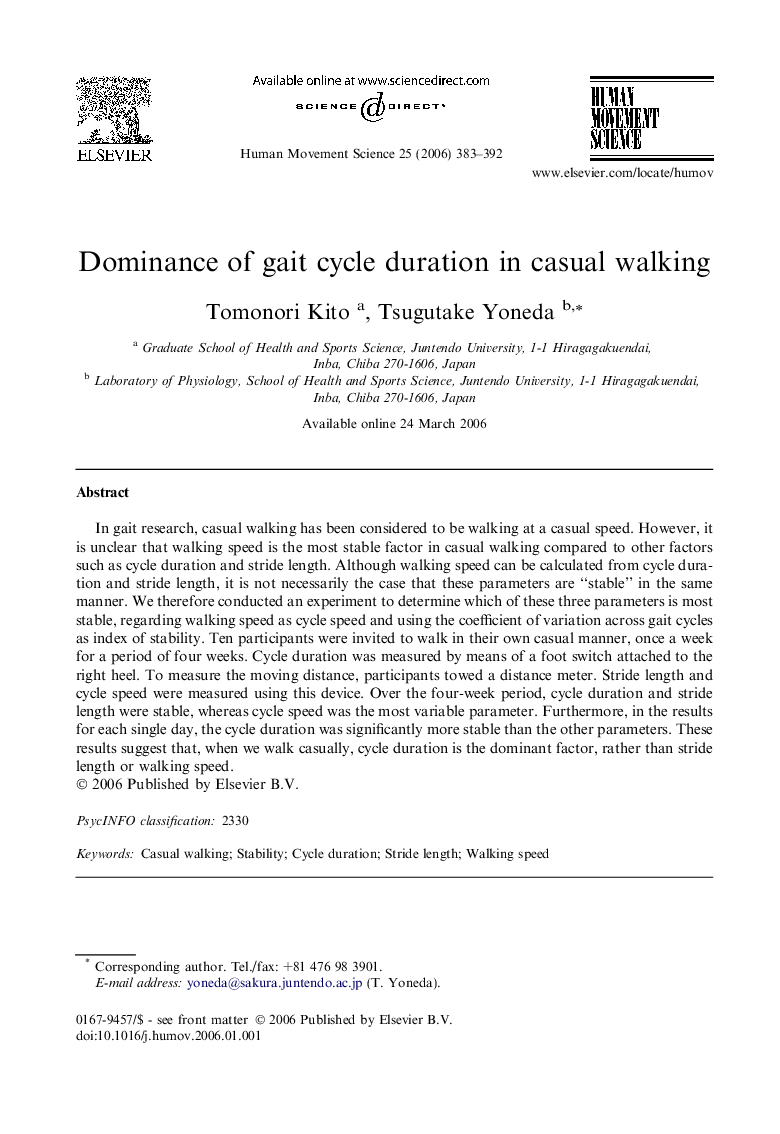| Article ID | Journal | Published Year | Pages | File Type |
|---|---|---|---|---|
| 928902 | Human Movement Science | 2006 | 10 Pages |
In gait research, casual walking has been considered to be walking at a casual speed. However, it is unclear that walking speed is the most stable factor in casual walking compared to other factors such as cycle duration and stride length. Although walking speed can be calculated from cycle duration and stride length, it is not necessarily the case that these parameters are “stable” in the same manner. We therefore conducted an experiment to determine which of these three parameters is most stable, regarding walking speed as cycle speed and using the coefficient of variation across gait cycles as index of stability. Ten participants were invited to walk in their own casual manner, once a week for a period of four weeks. Cycle duration was measured by means of a foot switch attached to the right heel. To measure the moving distance, participants towed a distance meter. Stride length and cycle speed were measured using this device. Over the four-week period, cycle duration and stride length were stable, whereas cycle speed was the most variable parameter. Furthermore, in the results for each single day, the cycle duration was significantly more stable than the other parameters. These results suggest that, when we walk casually, cycle duration is the dominant factor, rather than stride length or walking speed.
